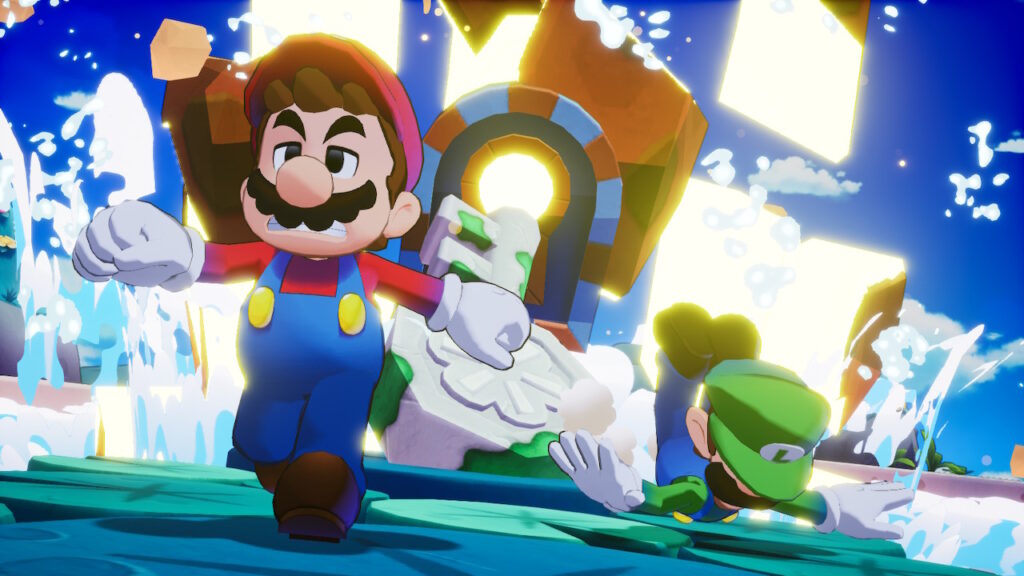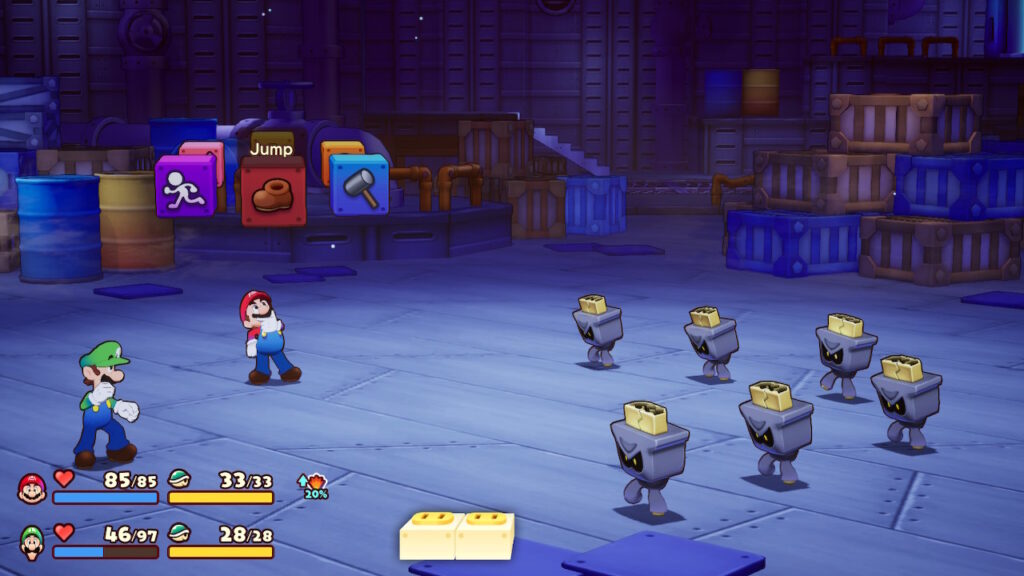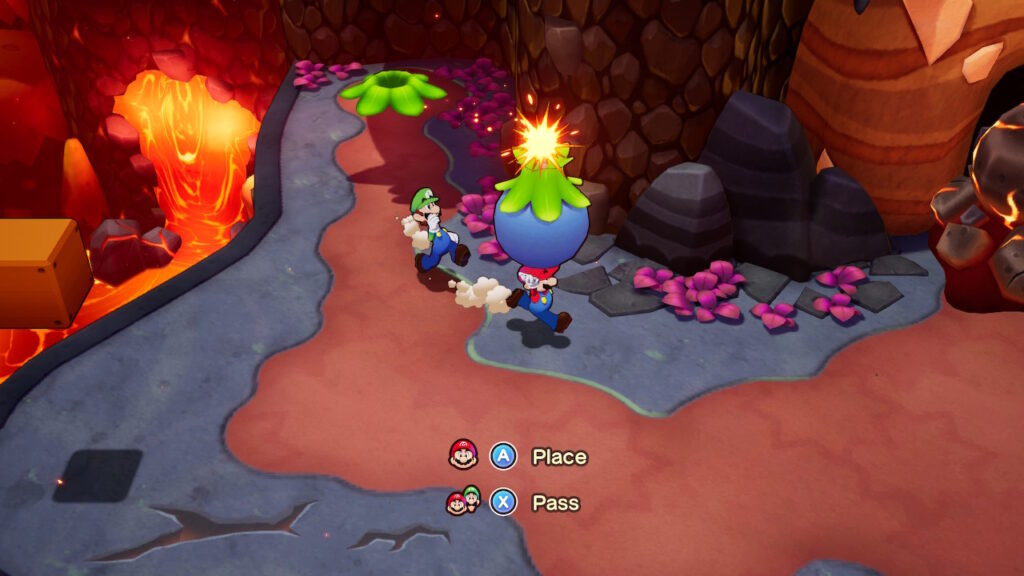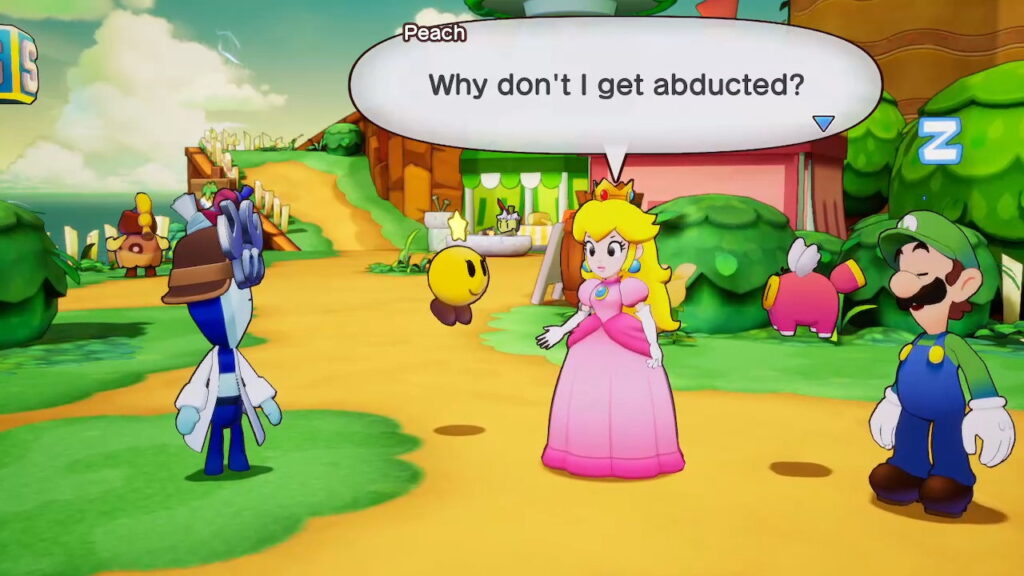- Genre: JRPG
- Platform: Switch
It’s not unprecedented that I drop a Mario RPG on the final dungeon and boy was that the case here. If you’d have asked me about 10 gameplay hours ago how I was going to start this ramblings it would have been “this game would have been better received if it was under any other IP” but this game just did not know when to end. Since then I had two plot twists at the end boss, a handful of really unnecessarily long dungeons, and a final dungeon with so many wings and unnecessarily spongey enemies that I just said “forget it, I’m done.”
And honestly, that’s a shame.

But for now, let’s go back to where I thought this set of ramblings was going to start. I really do think that this would have been better off with even a different name. Calling this game Mario & Luigi has so many expectations that come with it. Sure, there’s the timing-based combat but that had been done outside of M&L to where adapting that to another RPG wouldn’t have been seen as weird. What that name really brings with it is an expectation of a certain metagame style with large scale exploration in a mushroom kingdom setting. That is completely not this game.
This game is a series of relatively loosely connected 30 minute segments that you can kind of leisurely play at a relaxed pace that eventually loop back to a core story every now and then. However, independent of the M&L baggage this is a really fun metagame loop. This works well as an RPG where you have some agency over what order you’d want to do things. In other genres it would work well as a puzzle game where you go to different spots to solve unique puzzles. In an action game this would work where each loop has new enemy archetypes to engage with. Various Mario games have already proven that this metagame loop works well for a platformer where each new area has fun new challenges to engage with. However, it is not Mario & Luigi. If they had simply called this Super Mario Brothers-ship a ton of expectations would have been dropped, and frankly it would have probably been better received.

That is, until the end of the game. So many RPGs that are simply good but not great have the same failings around sticking the landing and this really is just a whose who of failures to stick the landing.
At about the 20 hour mark the first signs of this start to show up with the introduction of a Glohm mechanic. It makes sense tied to the story, but from a gameplay perspective it’s a debuff that prevents brother actions and can make enemies stronger. The main issue I had is that this is a sign of them running out of enemy archetypes, to where the glohm is in place to re-use old archetypes, but stronger. Typically besides just stronger, this actually means faster, and often that doesn’t just mean faster, it means fast enough that when we multi-attack, you can’t actually dodge all damage because game mechanics prevent you jumping/hammering that fast. Unavoidable damage in a combat system built around avoiding as much damage as possible is really a huge problem.
Then at about the 30 hour mark the dungeons start to get noticeably longer. 30 minute dungeons stretch into 45 minutes, then 60 minutes, and it really starts to negatively impact the fun of getting through a dungeon. Fighting the same enemy archetypes has a certain shelf life before you get bored, and this really starts to hit that cap. In isolation, it’s simply annoying because the pay off of a dungeon is usually a cool boss fight. While that’s certainly the case here, they start being capped off by unnecessary plot twists. The plot twists are obvious that they are coming, so they are both not fun and just generally feel like they’re extending the game for no reason. Past the plot twists are simply revisits of existing islands, so you don’t get new cool stuff. You’re just fighting stronger things that you’ve already fought (see previous note) and you’re not meeting new people. It just feels unnecessary.

For me, at about the 35 hour mark I then hit the final dungeon. I got to the end of the first wing, saw a hub with seven extending spokes, and literally just said “oh no”. It wasn’t actually seven wings since they loop back on themselves at times, but it was enough to be negatively impactful. I started playing a bit of it, but it was clear that it was going to be a slog. The just normal trash enemies very quickly stopped being 2-3 attack kills and started being 5-6 attack kills. They stopped doing 20-30 damage and started doing 80-90 damage. They stopped being occasional glohmed enemies and started all being glohmed enemies. It just stopped being fun. It wasn’t that it was hard, and I guess that’s my problem. It just felt like it was setup to kill time. I was already overleveled and it was dragging, so grinding to overlevel more was not appealing. I got back to the central hub and went “I’m good.”

I’ve never worked on a JRPG but in my head it feels like something that shouldn’t be difficult to tune around. There are certain metrics that testing should identify as fun. How long can a dungeon be before players start to grow bored of it? How long do players identify as “fair” to defeat a trash enemy? How many fights feels like enough to learn how an enemy archetype works before mastering it, and how many times can the player fight it before feeling bored? These are things that all worked very well for the first 20 or so hours of this game. I totally get that there’s a need to finish on bigger and badder, but bigger and badder should still be served by metrics of what is found as fun. Is an extra turn to kill an end game enemy a bad thing? Probably not but double the amount of turns probably is. 30 minute dungeons extending to 60+ is probably a bad thing. Fighting an archetype 10 times is fine, but 20 times is probably bad.
JRPGs that are simply just good flex too much from what is fun. JRPGs that are great do not. In my head as both a developer and consumer it’s as simple as that. Find the metrics that are fun, and make sure that you follow within some close range of that for the entire game. Make difficulty come from difficulty actually ramping up, not from length. Brothership simply failed that test.

